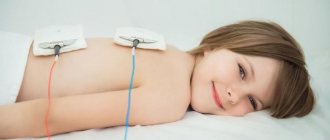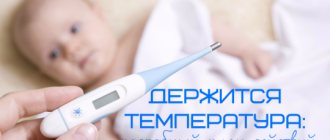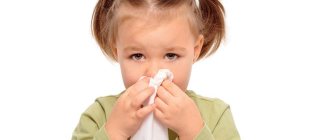Every day, pediatricians face a dilemma: “Whether to prescribe an antibiotic to a child or not.” And the complexity of the issue lies not only in the limited choice of antibiotics, but also in the reluctance of parents to use such a last resort to treat diseases.
Antibiotics for children - fear and risk
The drug "Levomycetin" is contraindicated for children under three years of age. It carries a high risk of CNS toxicity and liver damage, even fatal. The antibiotic "Ceftriaxone", especially when taken orally, can provoke complete sterilization of the intestines, followed by the colonization of harmful flora, possibly fungal.
Antibiotics for children - a hopeless situation
Any bacteria can adapt to the effects of drugs. Therefore, you should never give your child an antibiotic for prophylaxis, as this can only cause harm to health. However, there are times when taking an antibacterial drug becomes the only right decision.
Acute form of the disease
Pneumonia, follicular tonsillitis, purulent otitis, sinusitis, pyelonephritis require treatment with antibiotics. When the acute phase passes, physiotherapy or homeopathy is prescribed.
Postoperative periods
Typically, antibiotics are prescribed after surgery to prevent inflammation.
Poisoning by bacterial toxins
Tetanus, diphtheria, botulism require treatment with strong antibiotics.
Chronic diseases
Chronic diseases, for example, cystitis in girls, cannot be cured without antibacterial drugs. You can only make the problem worse.
Antibiotics for children - principle of action
For children, medications are usually prescribed in the form of fruit-flavored syrups, but antibiotics can be used in the form of tablets, powders, drops or injections. In any case, the drug is carried by the blood throughout the body, depending on the variety. Some drugs can penetrate the bones and treat inflammation in the skeletal system, others accumulate in the middle ear and eliminate otitis media. And there are drugs that attach to immune cells and, together with them, enter the source of the disease, where they begin a war with bacteria.
Antibiotics for children with limited action
The antibiotic is excellent at defeating bacteria, but with another pathogen it is absolutely useless. For example, the causative agents of acute respiratory infections, flu, colds, coughs and runny noses are viruses. They are treated with antiviral drugs. Fungal diseases, such as thrush, should be treated with antifungal agents. Antibacterial agents in this case can only aggravate the disease. Antibiotics for children with fever can eliminate the cause of the fever, rather than bring it down. It is not for nothing that pediatricians are of the opinion that antibacterial drugs should not be taken together with antipyretics in order to see how effective the medicine is. But this is possible if the temperature does not rise above 38C.
Antibiotics for children with cough
As mentioned above, only a doctor prescribes an antibiotic for a cough, and only if the cough is not caused by a virus. The drug is prescribed for pneumonia, tracheitis, pleurisy, tuberculosis, bronchitis or other respiratory tract diseases caused by bacteria.
The harm of antibiotics is a very big problem; they affect not only the physical condition, but also the mental one.
Antibiotics are medications used to prevent and treat bacterial infections.
We are used to being treated with antibiotics and this has become the norm.
But the problem is that even if you deliberately do not take antibiotics as treatment, this does not mean that you can be 100% sure that they are not entering your body in other ways, for example, through food.
Taking unnecessary antibiotics may do more harm than good. Although antibiotics have saved millions of lives over the years, overuse and overprescription of these medications are detrimental to your health due to their effects on your gut. And also there is an addiction to antibiotics, after which they stop working.
How do antibiotics work?
When you take an antibiotic, it enters your bloodstream and travels through your body, killing bacteria. However, there is little difference between bad and good bacteria. Antibiotics not only kill the bad bacteria that make you sick, but also the bacteria that benefit you.
Good bacteria in the gut help people in a variety of ways, including helping to produce vitamins and boosting immunity. Some researchers believe that killing them with antibiotics may contribute to the rise of chronic diseases such as obesity, asthma and cancer.
Additionally, the loss of good bacteria can allow other types of bacteria to multiply, leading to opportunistic infections.
Sometimes an opportunistic infection occurs when bacteria from the environment enters your body and infects bacteria damaged by the antibiotic. In other cases, an opportunistic infection begins when antibiotics upset the balance of microorganisms in your home and the normally friendly bacteria multiply too quickly and become harmful.
How do antibiotics work?
Antibiotics are effective for diseases caused by bacteria, not viruses. Bacteria are single-celled microorganisms several thousandths of a millimeter in size. They are divided into dangerous and harmful, causing otitis media, skin inflammation, throat and urinary tract infections.
Antibiotics are prescribed to children in the form of tablets, injections, suspensions, drops or ointments. They enter the site of inflammation and affect bacteria in different ways:
- bactericidal (penicillin, cephalosporin) kill bacteria;
- bacteriostatic (erythromycin, tetracycline) block the activity and proliferation of bacteria and have a positive effect on the immune system.
Harm of antibiotics to the human body
The main harm caused by antibiotics to the body is the destruction of your intestinal microflora, as a result, the general state of health is disrupted.
One study showed that within 30 days of stopping antibiotic treatment, fecal microbiota reached an average similarity of 88% to baseline, with levels increasing to 89% within 60 days.
However, the microbiota did not completely return to baseline levels over the time period studied. Thus, antibiotics cause immediate disruption of the ecosystem followed by incomplete restoration of the gut microbiome.
Antibiotics in milk
The use of antibiotics in the treatment of mastitis has created problems for the milk processor and consumer.
Research showed that penicillin was the main antibiotic found in milk. Penicillin, found in milk in very low concentrations, can cause reactions in highly sensitive people.
Improper use of antibiotics to control mastitis is the main reason they end up in milk.
Antibiotics in milk are relatively resistant to pasteurization temperatures and above, as well as to low temperatures (-12 degrees).
Many medications last longer in the animal's body than stated on the label. Consequently, milk samples remain positive for antibiotic residues.
A good example is penicillin, which supposedly disappears from milk within 72 hours. However, the remaining penicillin remains in the milk for 18 days.
After the time indicated on the label, drug residues were found in 35% of cows receiving cefapirin for mastitis and in 27% of cows receiving intramuscular injections of penicillin.
Side effects from antibiotics
- diarrhea
- nausea
- vomit
- rash
- stomach upset
- fungal infections of the mouth, digestive tract and vagina
Less common side effects:
- formation of kidney stones when taking sulfonamides
- bleeding disorders associated with certain cephalosporins
- Sensitivity to sunlight when taking tetracyclines
- blood diseases when taking trimethoprim
- deafness when taking erythromycin and aminoglycosides
Harm of antibiotics for children
The risk of overuse of antibiotics is higher in children because the gut microbiota is more sensitive than in adults and antibiotic use may have a longer lasting effect.
Side effects from antibiotic use are a common reason why children present to the emergency room. The drugs can cause diarrhea or vomiting, and about 5 in 100 children are allergic to them. Some of these allergic reactions can be serious and life-threatening.
Teratogenic effect
Teratogenic effect (theratos - freak) is associated with the penetration of antibiotics through the placental barrier. The greatest danger in this regard is tetracyclines. When prescribed to pregnant women, tetracyclines disrupt the formation of the fetus, the growth of fetal bones and skeletal formation in general are disrupted, and in newborns and young children the formation of teeth is disrupted. Thus, tetracyclines should absolutely not be prescribed to pregnant women. They are especially dangerous in the early stages of pregnancy. There is information about damage to the auditory nerves in children whose mothers received streptomycin or kanamycin during pregnancy.
Harm of antibiotics during pregnancy
Microbiota influences the health of mother and child, including normal immune and metabolic function later in life. The use of antibiotics during pregnancy undoubtedly affects the bacterial environment of the mother and fetus.
Antibiotic treatment during pregnancy is widespread in Western countries and accounts for 80% of prescribed medications during pregnancy. However, antibiotic treatment, although sometimes life-saving, can also have detrimental effects.
In pregnant women, antibiotic administration during pregnancy leads to changes in the vaginal microbiome before birth, which has long-term effects on early microbial colonization of the newborn and has been linked to childhood obesity.
A more recent study published in 2008 demonstrated that giving antibiotics to women in spontaneous preterm labor with intact membranes was associated with an increased risk of cerebral palsy and functional impairment in their children at age 7 years.
Antibiotic use during pregnancy has also been associated with an increased risk of developing asthma in early childhood, an increased risk of childhood epilepsy, and an increased risk of childhood obesity.
Of course, it can be argued that the primary maternal infection was the cause of the increased risk of these conditions, rather than the treatment itself. However, we suggest that antibiotics during pregnancy may affect the maternal bacterial ecosystem as well as the fetus, and therefore that their use should be carefully considered based on what is known and what remains unknown regarding their effects .
Antibiotics during pregnancy should be used only as directed, choosing those that have the narrowest range.
Kidney damage
Kidney damage by antibiotics is associated with existing kidney pathology, when the excretion of antibiotics is impaired, resulting in a cumulative effect. Renal dysfunction due to the accumulation of antibiotics is characterized by the appearance of protein and red blood cells in the urine and increasing azotemia. In cases of long-term use of antibiotics in high doses, severe forms of uremia may develop.
Most often, the nephrotoxic effect is caused by antibiotics such as kanamycin, streptomycin, gentamicin, cephalothin, rifampicin, neomycin, polymyxin. When prescribing these antibiotics, the functional state of the kidneys should be taken into account.
Harm of antibiotics for children: Development of dysbiosis
Dysbacteriosis is the most common and most unpleasant consequence of taking antibiotics, as they destroy beneficial microorganisms and disrupt the microflora in the intestines. Unfortunately, antibiotics cannot determine which bacteria are good and which are harmful, so they kill everything at once. If you decipher the name antibiotic, it turns out that it is an anti-life drug, that is, aimed at destroying living microorganisms that are sensitive to it.
Taking antibiotics is always aimed at destroying and stopping the proliferation of bacterial organisms that provoke the development of the disease. Along with pathogenic microorganisms, representatives of the intestinal microflora living on its walls also fall under the action of antibiotics. As a result, the balance of beneficial bacteria is disrupted.
Antibiotics kill the weakest, but the strongest survive. Since the intestinal flora consists of various bacteria, including fungi, when the beneficial ones that control their numbers die, the fungal flora begins to actively develop, leading to dysbacteriosis and, as a result, problems with stool.
It should be noted that antibiotics are a fairly serious drug and only a doctor has the right to prescribe them. If the therapy is not long-term and the dose is correct, then dysbiosis will not develop in the child.
In most cases, loose stools in a baby during treatment with antibiotics with clavulanic acid are perceived by parents as dysbacteriosis. But in reality this is not the case. Acid has a similar effect on the intestines, which enhances its motility, leading to frequent and loose stools. At the same time, feces do not have a strong odor and impurities as with dysbacteriosis.
In addition, loose stools at the beginning of antibiotic therapy are not dysbacteriosis, since the disease does not develop quickly. It appears only a week after taking the drugs. Therefore, during long-term antibiotic therapy, in order to avoid the development of dysbiosis, biological products are prescribed that restore the intestinal microflora.
Side effects associated with the chemotherapeutic effect of antibiotics
During antibiotic therapy aimed at the main causative agent of the disease, microorganisms that are not sensitive to a given antibiotic (natural or acquired resistance) may be encountered. Superinfection develops due to resistant staphylococci or microorganisms not sensitive to antibiotics. In the latter case, adverse reactions are usually caused by yeast-like fungi of the genus Candida. Superficial yeast lesions may occur, as well as generalized mycoses (candidiasis of internal organs). Broad-spectrum antibiotics, primarily tetracyclines, with long-term uncontrolled use disrupt the normal relationships between individual types of intestinal microflora and contribute to the activation and increased proliferation of Candida fungi.
The main symptoms of candidiasis when affecting the mucous membrane of the gastrointestinal tract are pronounced dyspeptic disorders. There is inflammation of the oral mucosa, lack of appetite, and nausea. When eating - sharp pain in the mouth, esophagus, stomach.
To prevent yeast infections, combination drugs are used that, along with tetracyclines, contain the antifungal antibiotic nystatin. Treatment of developed candidiasis is very difficult.
In some cases, with highly sensitive pathogens (pallid spirochete, Obermeyer's spirochete, typhoid bacillus), when antibiotics are administered, massive death of microorganisms occurs. A large amount of endotoxins are released in a short period of time (bacteriolysis reaction). The patient experiences chills, heavy sweating, tachycardia, and a rise in temperature. Treatment consists of the administration of active antihistamines (diprazine or pipolfen, suprastin) and the use of symptomatic medications.
The main diagnostic signs: shortness of breath, cold sweat, lead-gray coloration of the skin, increased or weakened heart rate, a sharp drop in blood pressure, vomiting, swelling of the mucous membranes, urticaria, loss of consciousness.
Antibacterial agents are a huge group of medications, without which it is impossible to cure many dangerous diseases. They help cope with pathogenic bacteria of various types and destroy them in the tissues of internal organs. However, antibiotics do not act selectively: they have a detrimental effect not only on pathogenic bacteria, but also on beneficial microorganisms that populate the intestines and other cavities of the human body.
Impaired functioning of organs and systems
Antibiotics can have a negative effect not only on the intestines. They can also affect the functioning of other organs.
On the part of the liver - the liver is responsible for cleansing the body of waste and toxins. Most harmful substances enter the body through the gastrointestinal tract. For this reason, blood flowing from the intestines is first filtered by the liver and only then delivered to the heart. You have to pay for all the harmful particles in the liver with your cellular structures.
During antibiotic therapy, the load on the liver increases significantly. For this reason, the more often antibiotics are prescribed, and the longer their courses, the greater the chance that the organ will be seriously damaged. Over time, an inflammatory process may develop, leading to damage to the biliary system and inhibition of enzymatic function.
Contraindications to the use of antibiotics
There are certain conditions when antibiotics should not be taken because they may be ineffective or life-threatening. The types of antibiotics are constantly growing, and each of them has its own contraindications.
To choose the right drug, it is necessary to rely on the patient’s medical history, which includes information about the person’s health problems. The correct choice of antibiotic is also influenced by the nature of the infection and the age of the patient.
The main restrictions on taking antibiotics include:
- Pregnancy. During the period of bearing a child, a woman’s body is most sensitive to chemical compounds. Their use is most dangerous in the first trimester. It is possible to take antibiotics during pregnancy, when the life of the mother and child is at risk.
- Breastfeeding. This limitation is not absolute, since antibiotics are often prescribed after birth complications. It is better to stop breastfeeding for the period of treatment.
- Kidney and liver failure. These organs are responsible for processing and removing them from the body. Therefore, in the presence of chronic liver and kidney diseases, antibiotics can have a negative effect.
- Alcohol and antibiotics are incompatible. Alcoholic drinks affect the metabolism and activity of drugs. Their combined use can cause such negative consequences as vomiting, nausea, shortness of breath and convulsions. There is information that the concomitant use of antibiotics and alcohol has led to death. If the parallel use of an antibiotic and an alcoholic drink has already been allowed, then you should take Polysorb. It will reduce the likelihood of negative consequences, relieve intoxication and remove alcohol more quickly.
Harm of antibiotics for children: Minimizing the negative
To minimize the harm of antibiotics, when taking them you must adhere to the following instructions:
Complete the course of medications to the end - you cannot stop treatment prematurely. You should know that the first few days of taking antibiotics only relieve symptoms, but do not eliminate the problem itself. For this reason, if the baby’s course is not complete, the disease will be muffled, but will continue to develop in a chronic form and in its subsequent outbreak, most antibiotics will not work. This will happen because the bacteria will develop immunity to the lekforms.
Take and not take together with other drugs
- Some pediatricians prescribe an antibiotic to a child along with antihistamines. This is unfounded and incorrect due to the fact that if an allergic reaction develops, it will not appear immediately, but only after a few days, which can significantly worsen its course. There are some medications that cannot be taken with antibiotics at the same time; several hours must pass between them. These drugs include ACC. It reduces the effect of the antibiotic to a minimum, as it absorbs it, thereby weakening its effect. But it is possible and necessary to use antibiotics with an antipyretic, since lekforms destroy bacteria, but do not reduce the temperature. During antibiotic therapy, high temperatures persist for some time, and in order for the child to feel better, it is necessary to additionally take an antipyretic.
In order for antibiotic therapy to cause as little harm as possible to the child’s body, you must strictly follow the doctor’s instructions and follow the recommendations described above.
The effect of antibiotics on the child's body
An antibiotic affects a child according to the following principle:
- It kills not only harmful, but also necessary bacteria in the intestines. Already from birth, an environment is formed in the intestines where microorganisms that poison food begin to function. Due to a disruption of the normal environment in the intestines, the child develops dysbiosis, constipation or diarrhea, the stomach is swollen, there is no appetite, normal absorption of food does not occur, and sometimes vomiting occurs.
- Due to the fact that the antibiotic has killed harmful bacteria, preventing the body from fighting them on its own, the immune system becomes weaker. It must be strengthened by taking vitamins and following the principles of proper nutrition. Of particular importance is constant wet cleaning of the room and regular ventilation of the room where the patient is.
- These drugs can provoke candidiasis, which is expressed in the appearance of white and cheesy formations on the mucous membranes. In such a situation, the doctor prescribes treatment.
Is rehabilitation necessary after taking antibiotics?
Most parents do not consider it necessary to listen to the doctor’s recommendations regarding compliance with the rehabilitation period for the baby after taking antibiotics. You can’t do this, the body needs to be helped to recover.
After antibiotic therapy, the baby should limit contact with sick babies, exclude fatty foods, spend more time in the fresh air, strengthen the immune system and reduce physical activity. If these recommendations are not followed, there is a high probability that the baby will soon get sick again.










